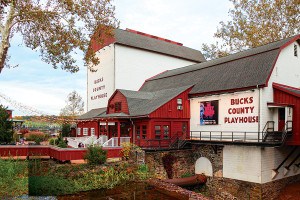The Question of Pedestrian Safety During Construction
Today in extremely safe West Philly construction practices swaying in the wind over the sidewalk. pic.twitter.com/crIfy8SAaN
— Amara Rockar (@arockar) November 25, 2014
With developments like the much-talked about CITC tower, the long awaited Divine Lorraine makeover, and a mixed-use loft space conversion to a former dye factory by MM Partners–just to name a few–contributing to Philadelphia’s exciting construction boom, it’s easy to forget that safety is sometimes given the short end of the stick when it comes time to start building, particularly when it involves pedestrians.
Not that the above mentioned projects are guilty of this, but as the above November tweet shows, some attitudes put little value on a walker’s well-being.
In fact, Feet First Philly co-chair Deborah Schaaf put the spotlight on the issue in a recent “Eyes on the Street” article on PlanPhilly, where she touches on several issues that plague pedestrians, one of which includes sidewalk closures during construction:
Sidewalk closures due to construction are becoming a more frequent occurrence as Philadelphia’s real estate market continues to improve. Unfortunately too many of these projects are not adequately providing pedestrians with safe walkways. Some recent examples at large construction sites include 38th and Chestnut Streets, Market and 20th Streets, and Rodin Square. At Rodin Square, a bike lane is also closed.
Sidewalk closures, Schaaf explains, force pedestrians to “detour or make the dangerous choice to walk in the street,” something which could be avoided if a covered walkway were put in place. Additionally, sidewalk closures are not allowed until an engineering study deems a covered walkway “impracticable” for the site, a requirement which doesn’t appear to be enforced too strongly:
Sidewalk and street closures are controlled by the Streets Department, in coordination with the Department of Licenses and Inspections. The Code specifies that no permit can be issued to close a sidewalk unless an engineering study finds that a covered walkway (sidewalk shed) is impracticable. Oddly, the application to close a sidewalk makes no mention of this required engineering study. Nor has the City adopted any official policy or guidelines regarding when or where sidewalk closures are permissible.
So, is there anything being done to discourage sidewalk closures? Well, according to Schaaf, the Streets Department has a graduated fee schedule that makes it cheaper for a walkway to be put in place. It’s not really sparking a change, unfortunately, as “many developers are willing to pay to close both the sidewalk and the parking lane, and sometimes even a traffic lane, for the full duration of construction.”
Meanwhile, although Council has recently adjusted Code provisions regarding construction signage “by making it easier for the public to know whether or not a sidewalk closure has a valid permit,” there’s still a slew of projects that have no information.
Schaaf points to the the Bicycle Coalition’s Better Mobility 2015 platform where these and other issues are addressed in full detail.
In similar news, former Councilman and current mayoral would-be Jim Kenney gave an interview to PlanPhilly where pedestrian safety and related issues were the topics of discussion.
Improve Philly’s great walkability by unblocking sidewalks [Eyes on the Street]


